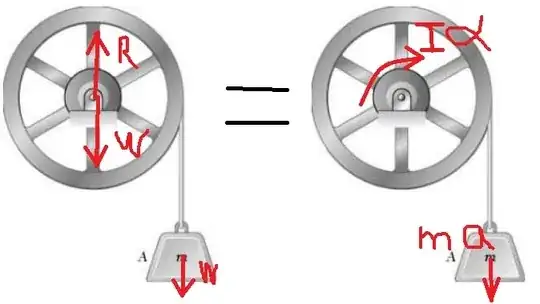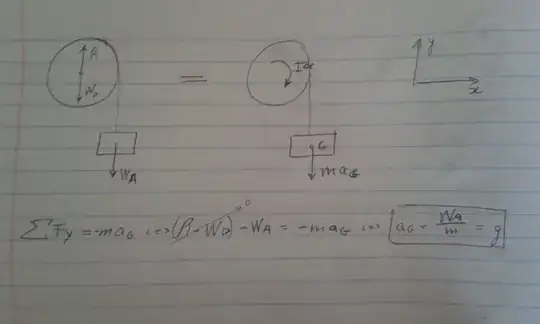Does Alembert work for systems of rigid bodies? My question comes from this image. (sorry for the poor drawing!)
I'm trying to find the acceleration of the block exclusively from the sum of forces in the y component, but when I do so I get $a=g$, which is the same as an object in free fall. On the other hand, if I use the relationship between angular acceleration and linear acceleration I find the right answer. Why can I not sum the forces in the $y$ direction and take $a$, that is the only question.

